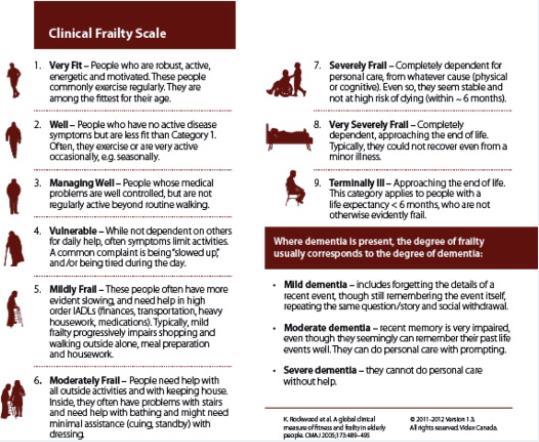Frailty Call to Action: Vitamin D is one of the action items
Frailty Consensus: A Call to Action
Journal of the American Medical Directors Association; V-14, Issue 6, June 2013, Pages 392–397
John E. Morley, MB, Bcha morley@slu.edu
Bruno Vellas, MDb, c,
G. Abellan van Kan, MDb, c,
Stefan D. Anker, MD, PhDd, e,
Juergen M. Bauer, MD, PhDf,
Roberto Bernabei, MDg,
Matteo Cesari, MD, PhDb, c,
W.C. Chumlea, PhDh,
Wolfram Doehner, MD, PhDd, i,
Jonathan Evans, MDj,
Linda P. Fried, MD, MPHk,
Jack M. Guralnik, MD, PhDl,
Paul R. Katz, MD, CMDm,
Theodore K. Malmstrom, PhDa, n,
Roger J. McCarter, PhDo,
Luis M. Gutierrez Robledo, MD, PhDp,
Ken Rockwood, MDq,
Stephan von Haehling, MD, PhDr,
Maurits F. Vandewoude, MD, PhDs,
Jeremy Walston, MDt
a Division of Geriatric Medicine, Saint Louis University School of Medicine, St. Louis, MO
b INSERM UMR 1027, Univerisité de Toulouse III Paul Sabatier, Toulouse, France
c Gérontopôle, Centre Hospitalier Universitaire de Toulouse, Toulouse, France
d Applied Cachexia Research, Department of Cardiology, Charité Medical School, Berlin, Germany
e Center for Clinical and Basic Research, IRCCS san Rafaette, Rome, Italy
f Geriatrics Centre, Carl von Ossietzky University, Oldenberg, Germany; Institute for Biomedicine of Ageing, Friedrich-Alexander University, Erlangen-Nuremberg, Germany
g Department of Geriatrics, Neurosciences and Orthopaedics, Catholic University of Sacred Heart, Rome, Italy
h Department of Community Health, Lifespan Health Research Center, Wright State University, Boonshoft School of Medicine, Dayton, OH
i Centre for Stroke Research, Berlin, Charité-Universitätsmedizin, Berlin, Germany
j President, American Medical Directors Association (AMDA)
k Joseph L. Mailman School of Public Health and College of Physicians and Surgeons, Columbia University, New York, NY
l Department of Epidemiology and Public Health, School of Medicine, University of Maryland, Baltimore, MD
m Baycrest Health Science Center and University of Toronto, Toronto, Ontario, Canada
n Department of Neurology and Psychiatry, Saint Louis University School of Medicine, St. Louis, MO
o Biobehavioral Health, The Pennsylvania State University, University Park, PA
p Instituto Nacional de Geriatria, Institutos Nacionales de Salud de Mexico, Mexico City, Mexico
q Geriatric Medicine, Dalhousie University, Halifax, Nova Scotia, Canada
r Applied Cachexia Research, Department of Cardiology, Charité-Universitätsmedizin, Berlin, Germany
s Department of Geriatrics, ZNA St. Elizabeth Hospital, University of Antwerp, Antwerp, Belgium
t Division of Geriatric Medicine and Gerontology, Johns Hopkins University, Baltimore, MD
Frailty is a clinical state in which there is an increase in an individual’s vulnerability for developing increased dependency and/or mortality when exposed to a stressor. Frailty can occur as the result of a range of diseases and medical conditions. A consensus group consisting of delegates from 6 major international, European, and US societies created 4 major consensus points on a specific form of frailty: physical frailty.
Physical frailty is an important medical syndrome. The group defined physical frailty as “a medical syndrome with multiple causes and contributors that is characterized by diminished strength, endurance, and reduced physiologic function that increases an individual's vulnerability for developing increased dependency and/or death.”
Physical frailty can potentially be prevented or treated with specific modalities, such as
- exercise,
- protein-calorie supplementation,
- vitamin D , and
- reduction of polypharmacy.
Simple, rapid screening tests have been developed and validated, such as the simple FRAIL scale, to allow physicians to objectively recognize frail persons.
For the purposes of optimally managing individuals with physical frailty, all persons older than 70 years and all individuals with significant weight loss (≥5%) due to chronic disease should be screened for frailty.
Recommendations
. Physical Frailty Is an Important Medical Syndrome
Simple Screening Tests Are Available to Be Used by Physicians to Recognize Frail Persons and Identify Persons With Physical Frailty or at Risk of Frailty
. Physical Frailty Is a Manageable Condition
All Persons Older Than 70 Years Should Be Screened for Frailty

See also VitaminDWiki
Frailty 2X less likely in depressed seniors having a good level of vitamin D – Nov 2018
CLICK HERE to use Google to search this site for Frailty - 149 items as of June 2016
Frailty and Vitamin D – with influence diagram Miller Oct 2010
Elderly with less than 15 ng were 3.7X more frail – May 2010
80 percent of the characteristics of frailty associated with low vitamin D – May 2013
Physical performance of seniors increases with vitamin D up to 30 ng – Jan 2013
Seniors with higher vitamin D levels have better physical performance – Sept 2012
Loss of muscle strength –sarcopenia – one of the suspects is vitamin D – Aug 2012
More postural body sway in seniors associated with low vitamin D – July 2013
Title change made June 2022 caused the visitor count to reset.
There have actually been visitors to this page since it was originally made
